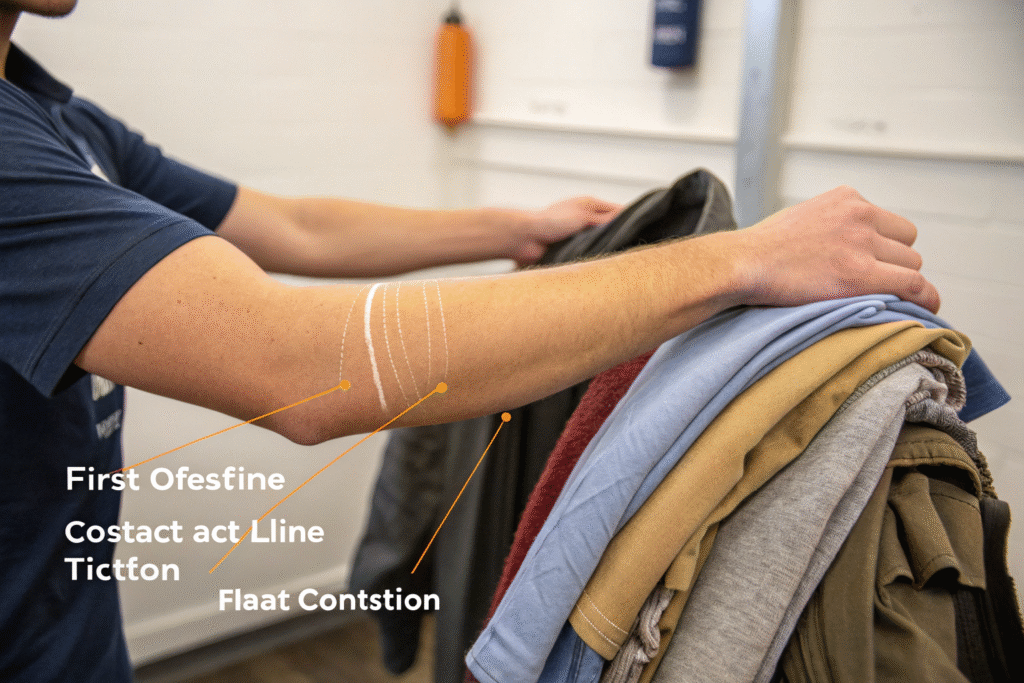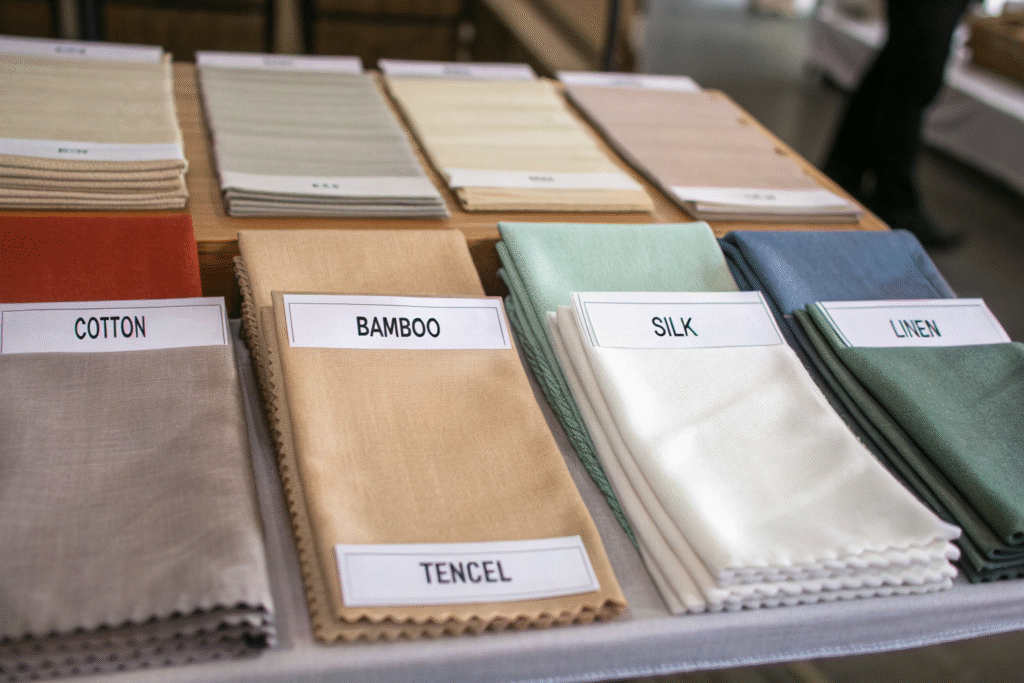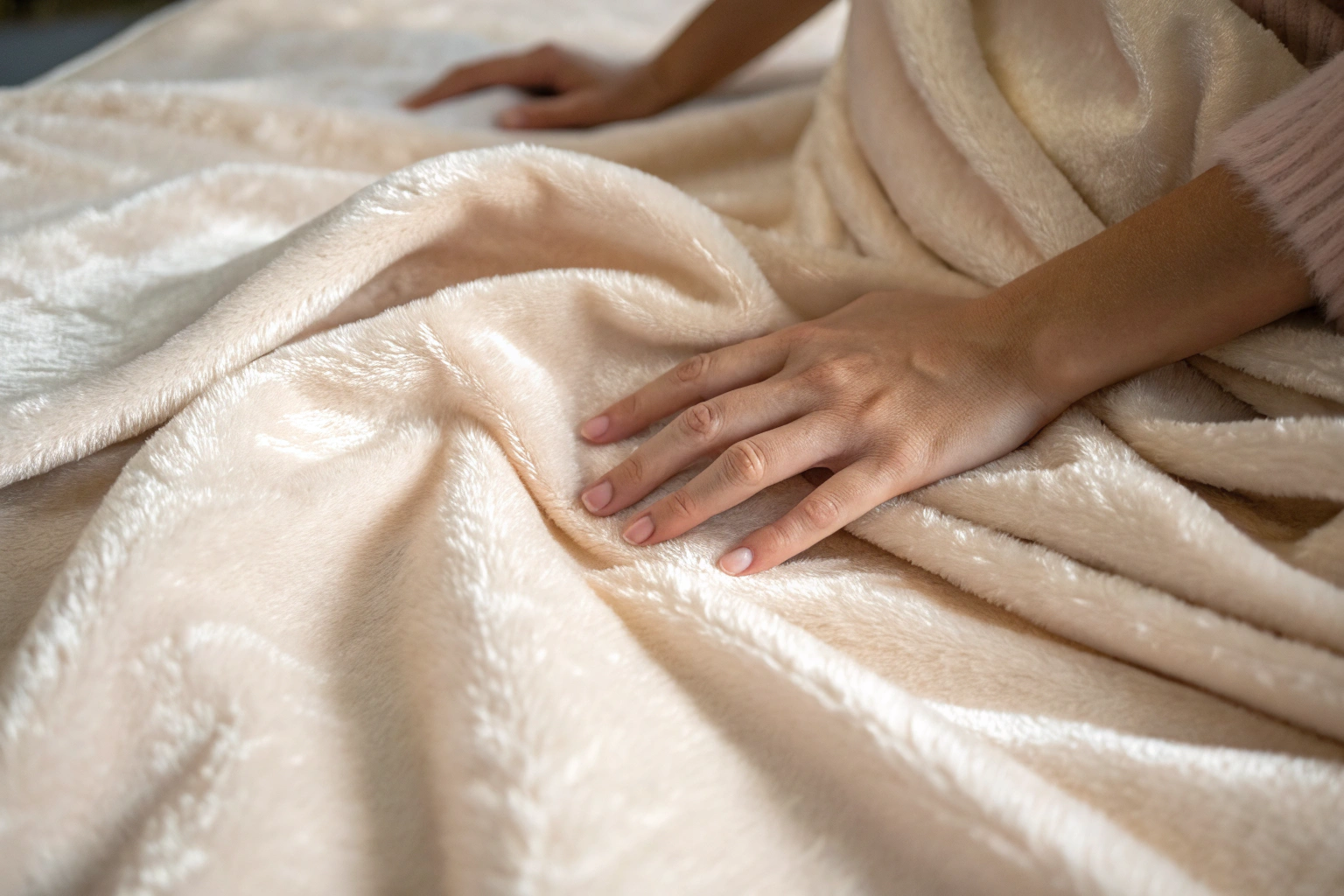For individuals with sensitive skin, fabric selection is not just about fashion; it is about comfort and health. The skin reacts quickly to rough textures, synthetic treatments, or poor breathability. When the wrong material is worn, it can cause irritation, itching, or rashes. Conversely, the right fabric provides softness, regulates temperature, and reduces the risk of discomfort.
The most suitable fabrics for sensitive skin are natural, chemical-free, breathable, and smooth in texture. Options such as organic cotton, bamboo, silk, linen, and Tencel offer these qualities, while harsh synthetics and heavily treated textiles should generally be avoided.
This article explains why fabric choice is so important for sensitive skin, explores the best fabric types, identifies which ones to avoid, and provides practical guidelines for making the right decisions.
Why Does Fabric Choice Matter for Sensitive Skin?
The skin is the body’s first line of defense, and in sensitive individuals it is more vulnerable to irritation. Fabrics that trap heat, hold chemicals, or create friction can lead to discomfort. Because clothing is in constant contact with the skin, even small irritants can cause problems.
Choosing breathable, gentle, and toxin-free fabrics helps reduce the chance of irritation and supports overall skin comfort.

Common Triggers in Clothing
- Chemical Residues: Harsh dyes and finishing agents may trigger allergic reactions.
- Rough Textures: Coarse fibers increase friction and cause chafing.
- Poor Ventilation: Non-breathable materials trap sweat and heat, worsening irritation.
Since these triggers directly cause skin discomfort, selecting fabrics that avoid them is the most effective preventive measure.
Which Fabrics Work Best for Sensitive Skin?
Some fabrics naturally provide the softness, breathability, and hypoallergenic qualities that sensitive skin requires. Because of these properties, they consistently outperform synthetics in terms of comfort.
Organic cotton, bamboo, silk, linen, and Tencel are the most reliable choices for sensitive skin.
![]()
Organic Cotton
- Why It Helps: Grown without pesticides or harsh chemicals, which reduces allergens.
- Key Properties: Soft, breathable, and absorbent.
- Best Applications: Everyday wear, baby clothes, undergarments.
Bamboo
- Why It Helps: Naturally antibacterial and hypoallergenic, reducing odor and irritation.
- Key Properties: Moisture-wicking, breathable, and silky in feel.
- Best Applications: Pajamas, underwear, sensitive-skin sleepwear.
Silk
- Why It Helps: A protein-based fiber that glides smoothly over the skin, reducing friction.
- Key Properties: Hypoallergenic, breathable, and temperature-regulating.
- Best Applications: Nightwear, lingerie, scarves, and luxury apparel.
Linen
- Why It Helps: Highly breathable and lightweight, preventing overheating.
- Key Properties: Strong, moisture-absorbent, and softens with use.
- Best Applications: Summer wear and loose-fitting garments.
Tencel (Lyocell)
- Why It Helps: Produced in a closed-loop system, ensuring chemical safety and fiber smoothness.
- Key Properties: Gentle on skin, excellent moisture absorption, eco-friendly.
- Best Applications: Casual wear, activewear, and sustainable clothing.
As the National Eczema Association explains, breathable fabrics such as cotton and silk help reduce flare-ups in sensitive skin conditions.
Which Fabrics Should Be Avoided?
Just as some fabrics protect sensitive skin, others make irritation worse. Materials that trap heat, create friction, or involve harsh chemicals can cause discomfort and flare-ups.
Wool, polyester, and chemically treated synthetics are the most common culprits.

Fabrics to Avoid
- Wool (except superfine Merino): Its coarse fibers often cause itchiness and irritation.
- Polyester and Nylon: These synthetics trap heat and moisture, creating an uncomfortable environment.
- Heavily Treated Blends: Fabrics with strong dyes or finishes may contain chemical residues harmful to sensitive skin.
Because these fabrics often worsen skin sensitivity, limiting or replacing them with natural alternatives is a safer choice. For durability needs, blends that combine natural and synthetic fibers in safe proportions may be acceptable.
How Can You Choose the Right Fabric for Sensitive Skin?
Beyond knowing which fibers to use and which to avoid, practical steps improve fabric safety and comfort. Each step strengthens the cause-and-effect relationship between careful selection and healthier skin.
By prioritizing certified, pre-washed, and seasonally appropriate fabrics, individuals can minimize irritation and maximize comfort.

Practical Guidelines
- Look for Certifications: Fabrics with OEKO-TEX® Standard 100 certification are tested for harmful substances.
- Pre-Wash Clothes: Washing before use removes potential residues from production.
- Select Smooth Weaves: Fabrics with a soft surface reduce friction against skin.
- Match Season to Fabric: Cotton and linen for hot weather, silk and Tencel for year-round wear.
- Test Before Use: For highly sensitive individuals, testing a fabric on a small area of skin first can prevent problems.
These steps link directly to better outcomes, ensuring both safety and comfort in daily wear.
Conclusion
Fabric choice has a direct impact on individuals with sensitive skin. Organic cotton, bamboo, silk, linen, and Tencel stand out as the most suitable options because they are soft, breathable, and hypoallergenic. In contrast, wool, polyester, and chemically treated textiles often trigger irritation and should be minimized. By understanding these cause-and-effect relationships and following practical guidelines, people can protect their skin while enjoying comfort and style.
At Shanghai Fumao, we supply a wide range of sensitive-skin-friendly fabrics, including organic cotton, bamboo, and premium Tencel blends. To explore safe and sustainable fabric options for your next clothing line, contact our Business Director Elaine at elaine@fumaoclothing.com.










